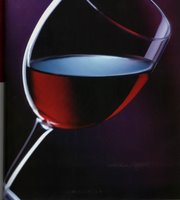
Where this equation often doesn't line up is with the wine list. Nowhere - including the wine industry as a whole - is there a greater room for discrepancy between potential prices and quality as there is with wine. As a waiter, if a patron feels jobbed by a wine recommendation, the tip will suffer.
With menu items, entrees for instance might range between 18 and 25 dollars with a rogue $29 steak, and each of those items is priced to offset the cost of the ingredients used to make it. At that same restaurant, the wine list could then range between $25 and $150 per bottle, with little oversight as to what goes into each selection as well as what's often a 100% markup. It's always said that a restaurant makes its money on booze, and wine is the greatest opportunity.
This is fine. These are the groundrules and the landscape for eating out. It's also what potentially can put the waiter in an uneviable position that they may or may not handle well.
Wednesday night I was with some friends at Plouf. The meal was great - even better than expected - and the upsell on wine was entirely evident. When we asked for a "moderate" selection of a French Bourgogne, we were directed to two wines that both looked attractive at $50-$55 each. When we asked for something "cheaper" we were re-directed to California Pinots priced between $55 and $65 because "French wines are expensive by nature". Finally, after more prodding, I was directed to a $47 Gigondigas which we opted for (and which we thoroughly enjoyed) . As much as we enjoyed it, it still didn't change the fact that on that Wednesday night we were interested in buying a $30 bottle of wine but couldn't get an appropriate recommendation.
(Granted, one aspect of this was that charming, French attitude of a selective-understanding language barrier. Both amusing and frustrating, this won't be found everywhere.)
Despite drinking wine we liked, pushing the bill over our comfort level left a bad taste in our mouth. That's the example that spurred my thoughts on this. The point of it is that diners should be aware that wine is the area where a waiter only sometimes has your best-interests in mind, and thus this is the area where you should be the most direct about your needs and the most self-righteous. Complicating this further, wine is often the area on the menu where diners are the most unsure of themselves (do you see a market opportunity here?).
What this does is make restaurants that have thoughtfully-planned wine lists, waiters that are smart and independent, as well as a long-term perspective on management, places that are generally more enjoyable at which to drink wine.
1 comment:
That is why a good waiter steers his customer to a good bottle of wine and knows how to value recommend. If a customer ends up with a crummy bottle of wine with his expensive meal, the waiter has some degree of fault, and should get a crummy tip.
Post a Comment